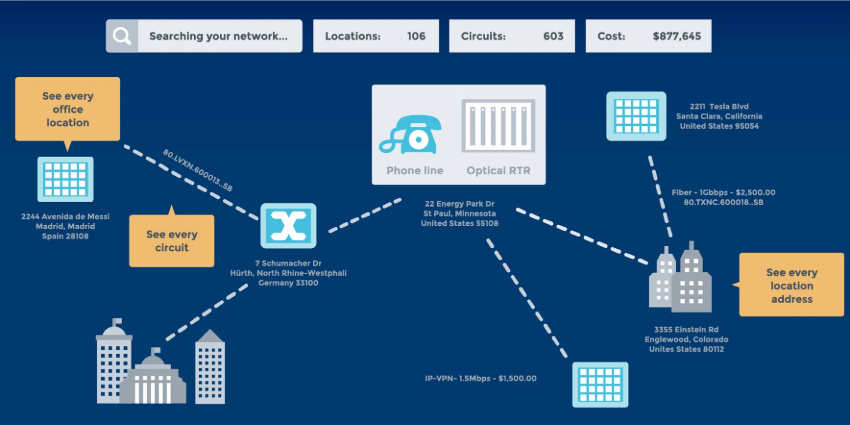<subtitle> Key Wi-Fi Management Requirements for IoT
Excerpt: The growth of IoT data is overwhelming Wi-Fi networks, causing security issues and consuming IT resources. How can you ensure your wireless network is ready?
How many billion Internet of Things (IoT) devices are expected by 2020? IDC is expecting 30 billion, but whether it is 20, 30, or 50, a large number of devices will be connecting to your wireless network over the next few years. IoT is transforming products and processes across the board, from design to customer service, in almost every industry. IoT data, almost all of it transmitted wirelessly, is helping organizations reduce operating costs, disrupting relationships and value chains, and providing real-time insights into a wide range of activities. Unfortunately, IoT devices are also overwhelming wireless networks, causing security issues, and consuming IT resources. As you adopt IoT, the question is, “Is your network ready?”
30 billion connected IoT devices are expected by 2020, placing tremendous pressure on Wi-Fi networks.
IoT Requirements
The network requirements for IoT devices are quite different from traditional wireless LANs. Traditional Wi-Fi access points were designed for laptops and other mobile, user-operated devices. They were not designed for an extremely large number of autonomous IoT devices. As you prepare your wireless network to support IoT, the three critical characteristics to consider for Wi-Fi management are simplicity, security, and scalability.
Simplicity
The number and placement of IoT devices makes wired communications expensive and inflexible, leaving Wi-Fi networks as the only viable option inside the building. With no user, and often no user interface, installing and connecting these ‘headless’ devices needs to be secure and easy. Traditional portal based or 802.1x certificate-based onboarding solutions cannot be used as most IoT sensors do not have browsers or nor do they support 802.1x supplicants.
When evaluating Wi-Fi management solutions, consider platforms that use device profiling or finger-printing technology to automatically recognize and classify devices. Creating and managing individual configurations and accounts for the wide range of IoT devices needs to be extremely simple or IoT Wi-Fi management will quickly overwhelm the workload of any IT department. Fortunately, cloud-based Wi-Fi management tools provide easy configuration, deployment, and management from anywhere and any authorized device.
Security
It goes without saying: delivering effective IoT security for wireless networks is critical. While you need to make it easy for IoT devices to connect, you also need to ensure only authorized devices are allowed onto the network and to segment traffic from end-to-end. Depending on the sensitivity of the data gathered by these IoT devices, traffic may need to be encrypted. In certain cases, traffic from these IoT devices may also need to be directed onto a separate network. When selecting Wi-Fi management solutions, consider Wi-Fi access points that have the ability to automatically recognize IoT traffic and segregate it into separate uplinks to keep the traffic away from the regular enterprise data network.
The best IoT security enforces policies at the source, in the Wi-Fi access points where the IoT devices connect to the network. For example, most IoT sensors typically communicate with a single application service. In building automation, lighting sensors communicate with a lighting control server and not with Oracle supply chain management or HR databases. It is important to implement end-to-end traffic segmentation to lock down the communication between an IoT device class and its application service.
Scalability
Wireless networks for IoT need much greater scalability, typically an order of magnitude greater, than user-access Wi-Fi. The high number of IoT devices and the exponential growth of intellectual property generated at the edge calls for a high-density Wi-Fi network that is capable of supporting multiple 100s of IoT devices per access point. Wi-Fi is a shared medium and the greater the number of devices connect to an access point, the worse the performance gets. To support the performance needs of IoT devices in your WLAN, consider Wi-Fi access points with more than two radios for supporting wireless clients.
Software-defined networks and programmable radios can instantly boost the capacity of the Wi-Fi networks. Software-defined capabilities provide you with the flexibility of configuring your Wi-Fi access points to the specific needs of your network. If you need more capacity within a specific Wi-Fi band (2.4GHz or 5GHz), all it takes is a simple click of a button in the W-FI management system to boost capacity without having to add additional hardware, thereby lowering your total operating costs.
Keys to successful IoT deployment
Without the necessary business objectives, IoT can quickly become just another over-hyped technology. After identifying the appropriate use case, outcomes, and desired business impact, your team can translate that into the necessary technical requirements. Among other things it is important to evaluate your current wireless LANs. Do you have enough high-density, multi-radio access points to handle the proposed number of devices? Can your architecture, whether centralized or distributed, grow with and support the expected business needs over the next 5 to 8 years?
Automated Wi-Fi management and wireless access solutions are a fundamental part of successful IoT deployments, as they can easily adapt to the dynamic demands of wireless IoT communications. These systems provide the necessary business performance, security, and flexibility, while significantly reducing IT workloads. IoT devices have distinct behavior and support characteristics, yet they are all connecting over the same wireless network as laptops and phones. Each device type requires its own profile, access controls, network segmentation details, and security constraints. IoT devices are far more than just another application crossing the wireless LAN, and they require careful planning and support for a successful deployment.
Category: blog
Tags: wi-fi management, Wi-Fi access points, IoT, IoT security
Author Bio
Kowshik Bhat, Short Bio
Technology enthusiast, Kowshik Bhat, enjoys application of technology to solve business challenges. He is currently the Director of Product Marketing at Riverbed Technologies and frequently speaks at industry events, delivers webinars and writes blogs. After spending over two decades in the networking and telecommunications industry, and engaging with businesses all across the globe, Kowshik knows his true passion is in educating people on how to apply technology to address business needs.
As a marketer, Kowshik regularly interacts with customers, channel partners and field staff, in helping them understand the value of technology and how it can be applied to various business situations. Prior to joining Riverbed, he worked at companies such as Intel, Hewlett Packard and Xirrus. He holds a MBA from Graduate School of Management at UC Davis, and frequently engages in mentoring programs at the UC Entrepreneurship Academy at his alma mater.






